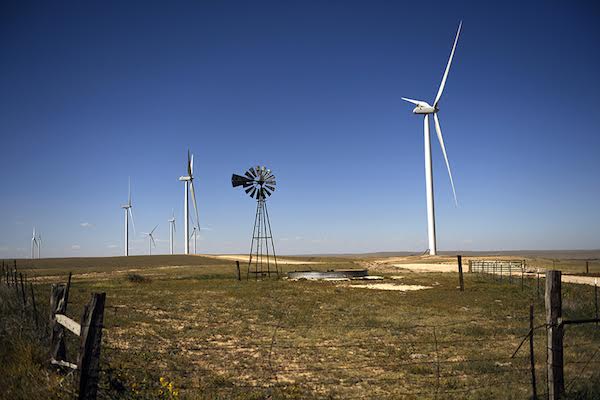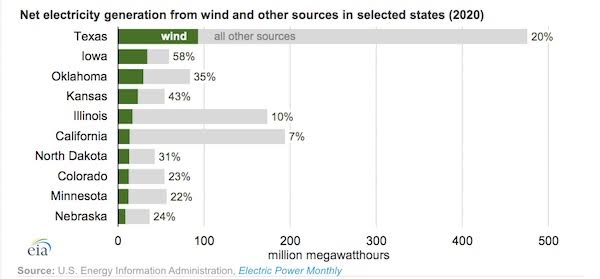More than 16,000 megawatts of U.S. wind power-generating capacity was installed in 2020 making it a record year. This is also the first time wind power developments outpaced solar power installations, culminating in $24.6 billion in investment across 25 states. Currently, sixteen states get more than +10% of their electricity from land-based wind generation with some in the midwest like Iowa, Kansas, Oklahoma, South Dakota and North Dakota getting more than +30%.
Driving adoption is the declining turbine prices spurring on greater federal and municipal investment in wind power. Reports indicate there was more than 16,000 megawatts of U.S. wind power-generating capacity installed in 2020. In fact, prices are now averaging below 2 cents per kilowatt-hour (kWh) for newly built projects, making wind very competitive with other energy generation sources.
Let’s also keep in mind, the U.S. Production Tax Credit (PTC), a per-kilowatt-hour credit for electricity generated by eligible renewable sources, remains in play after first being enacted in 1992 and has been extended and modified in the years since. At the end of December 2020, Congress extended the PTC at 60% of the full credit amount, or $18 per megawatt-hour through December 31, 2021. On top of that, the DOE estimates that the operation cost of wind turbines has dropped from $1,800 per kilowatt in 2008 to under $770 per kilowatt for some locations. Also, the performance of wind power, measured on a capacity factor, meaning a ratio of the amount of energy a turbine actually produces compared to the amount it could have produced is dramatically improving as the technology gets better, with the biggest gains being seen across the region that stretches from Texas north to the Dakotas.
Experts now believe with recent growth and the capacity for much more affordable wind power to come we could actually reach the goal of 20% Windpower by 2030 and perhaps reach the administration’s goal of decarbonizing the electricity sector by 2035. Still seems like an incredibly lofty goal to me but I guess possible if the technology gains and investments continue in this space.
More specifically, the tech progress is being made in large part to the new and longer blades installed which allow the turbines to generate more power as they’re spun. Keep in mind, in 2010, there were no turbines in the US that had rotors at or above 377 feet in diameter. However, last year 91% of new turbines had rotors of this size or larger, with the expectation that the size will continue to increase. Also, the towers these rotors are attached to are also getting taller albeit not as fast as the tech changes in blade length.
Bottom line, All of this is making wind power cheaper, in 2009 the national average price of wind power purchase agreements reached a peak of $70 per megawatt-hour. Now, in the “wind belt,” it is around $20 per megawatt-hour and averages around $30 per megawatt-hour in the country’s eastern and western regions, meaning we are at all-time lows when you take into account the impact of the renewable energy tax breaks.
More infrastructure incentives may need to come into play as wind operations tend to be located far away from major population centers and require transmission lines to carry the electricity to the stations. We are hearing from some of our growers that their states are starting to look at the issue at the local level to create better financial incentives for landowners to commit some acres to the projects. I should add, the same folks are also saying some legislators are looking at “eminent domain” to perhaps access the needed properties to keep the shortest route possible back to the substations.
Personally, I’m thinking we are going to see a lot more wind and solar projects popping up, meaning some landowners will have new opportunities for profitability on certain acres as well as creating jobs to help change the rural infrastructure. (Source: arstechnia, eia.gov, thehill)










